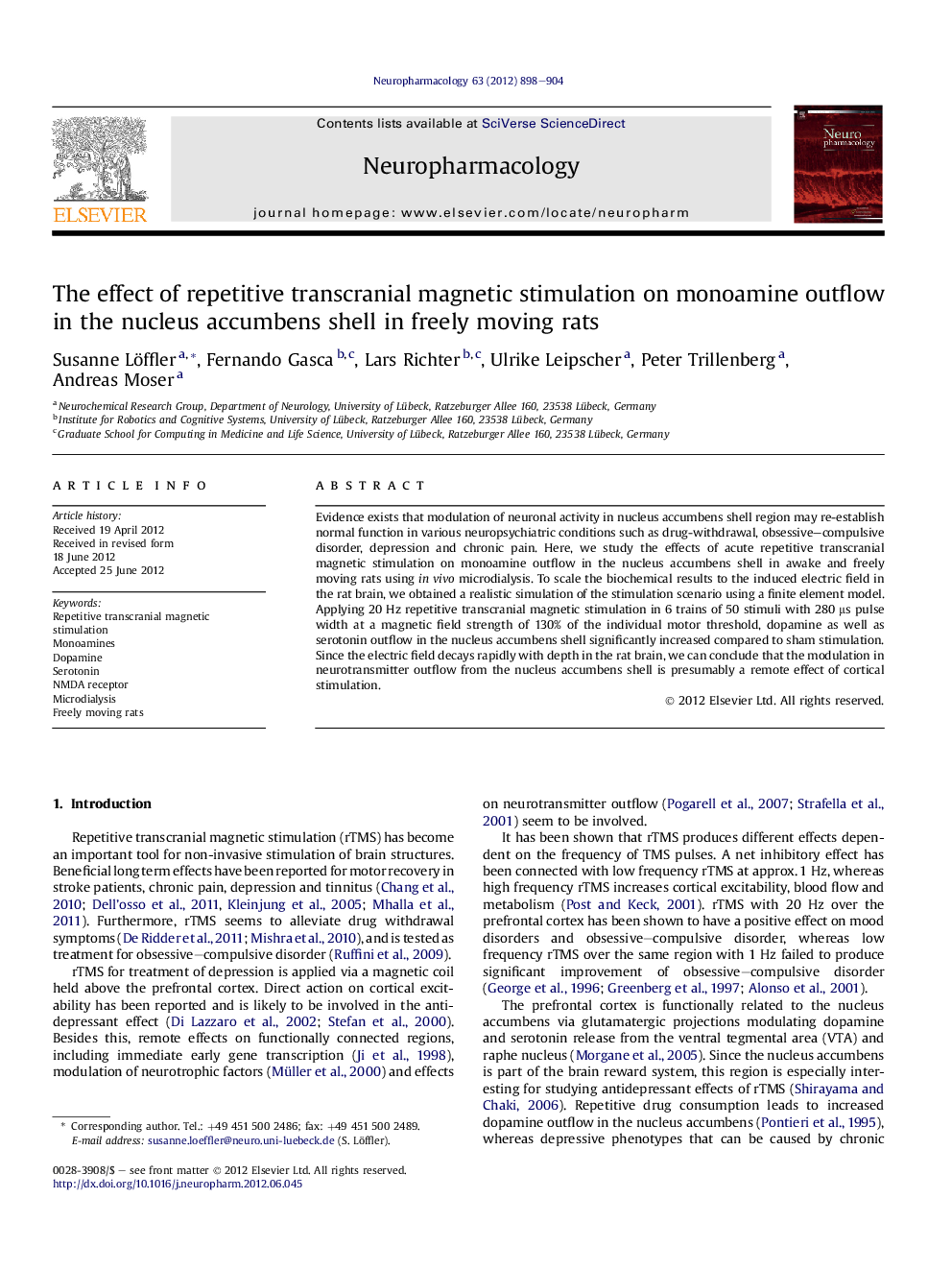| Article ID | Journal | Published Year | Pages | File Type |
|---|---|---|---|---|
| 5815630 | Neuropharmacology | 2012 | 7 Pages |
Evidence exists that modulation of neuronal activity in nucleus accumbens shell region may re-establish normal function in various neuropsychiatric conditions such as drug-withdrawal, obsessive-compulsive disorder, depression and chronic pain. Here, we study the effects of acute repetitive transcranial magnetic stimulation on monoamine outflow in the nucleus accumbens shell in awake and freely moving rats using in vivo microdialysis. To scale the biochemical results to the induced electric field in the rat brain, we obtained a realistic simulation of the stimulation scenario using a finite element model. Applying 20 Hz repetitive transcranial magnetic stimulation in 6 trains of 50 stimuli with 280 μs pulse width at a magnetic field strength of 130% of the individual motor threshold, dopamine as well as serotonin outflow in the nucleus accumbens shell significantly increased compared to sham stimulation. Since the electric field decays rapidly with depth in the rat brain, we can conclude that the modulation in neurotransmitter outflow from the nucleus accumbens shell is presumably a remote effect of cortical stimulation.
⺠Visually and electrophysiologically determined TMS motor thresholds are similar. ⺠Electric field strength in the accumbens nucleus is 27% compared to the cortex. ⺠The levels of accumbal dopamine and serotonin increase significantly after rTMS. ⺠The levels of accumbal GABA and glutamate remain unaffected by rTMS.
